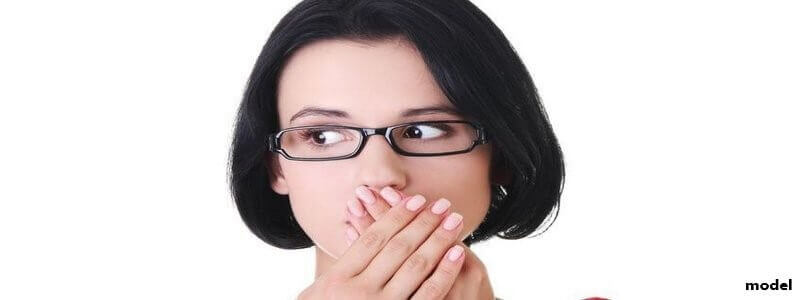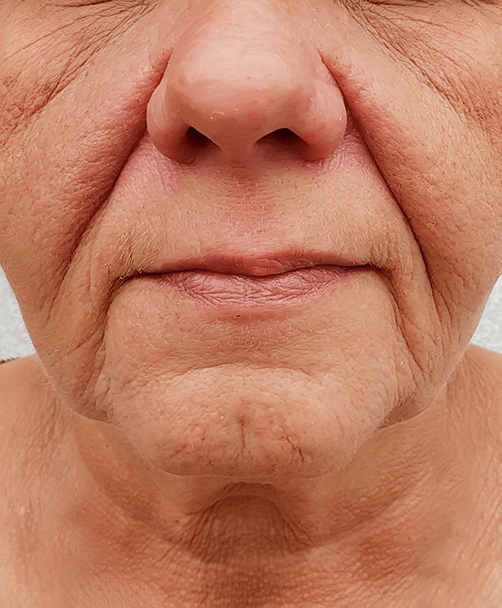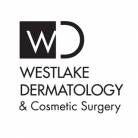Nasolabial Folds Treatment And Prevention Options

Nasolabial folds are the lines that extend from either side of your nose down toward the corners of your mouth. Since they are most prominent when you’re smiling or laughing, nasolabial folds are often called laugh lines or smile lines.
While everyone has nasolabial folds, they tend to become more visible with age, as skin becomes thinner or sags. These lines are emphasized by wrinkles, or the muscular tissue of your lower cheeks.
Nasolabial folds are normal and not harmful to one’s health. However, many people find their nasolabial folds aesthetically displeasing, especially as they become more severe creating deep wrinkles. While nasolabial folds cannot be completely prevented from developing, there are way to minimize their visual appearance.

Example of severe nasolabial folds
What Causes Nasolabial Folds
Everyone has nasolabial folds except for newborns and those with facial paralysis. That said, some have them more prominently than others, with the following causes to blame:
- Genetics. Our DNA dictates how the skin will age.
- Aging. Collagen and other skin firming proteins are lost with normal aging, which makes your skin thinner, weaker, and more prone to wrinkling.
- Sun exposure. Exposure to UV light speeds up the aging process, causing wrinkles and uneven skin texture.
- Smoking. Exposure to cigarette smoke and other pollutants speeds aging and damages collagen.
- Weight gain. Significant weight gain can enhance the appearance of nasolabial folds by making cheeks plumper.
- Weight loss. Major weight loss can lead to lose or sagging skin, which intensifies the appearance of nasolabial folds.
Preventing Nasolabial Folds
While genetics plays a key role in nasolabial fold development, our environment and our actions also play a role in our appearance. Anything that supports collagen production can improve the appearance of laugh lines by thickening and strengthening skin, and minimizing wrinkles.
Simple ways to keep the skin resistant to nasolabial formation include:
- Using moisturizing skincare products that stimulate collagen, such as hyaluronic acid
- Choosing products that contain antioxidants and Vitamin C, which boost collagen
- Adding retinoids to your skin care regimen – but use wisely: pair with moisturizer
- Avoiding sun exposure and never use an indoor tanning bed
Facial Exercises
While there’s yet to be proof via scientific study, exercise could logically improve the appearance of nasolabial folds by strengthening the muscles of the lower cheeks, mouth and chin. In the least, it won’t hurt to do the following once or twice daily:
- Seal your lips using your hands and puff up your cheeks
- Hold for 15 seconds while you transfer air from cheek to cheek. Do 2-3 sets.
- Pucker your lips in a kiss towards the ceiling
- Hold for 15 seconds. Do 4-5 sets.
- Slightly open your mouth, and pull back on the corners with clean fingers.
- Hold for 2-3 seconds. Do 10-20 sets.
Nasolabial Folds Treatment Options
There numerous non-surgical and surgical treatment options for nasolabial folds of any severity. Common treatments for nasolabial folds include:
Dermal Fillers
Dermal fillers can lessen the appearance of nasolabial folds by plumping the upper cheek or the area just below your smile lines. Fillers like Juvederm or Restyalne are 100% non-surgical and provide results that are both dramatic and instant. There’s also no downtime, patients can return to their normal daily activities immediately following treatment.
Skin Resurfacing (laser treatments or chemical peels)
Laugh lines sometimes leave a permanent wrinkle that’s evident even when you’re not smiling. The appearance of these wrinkles can be reduced with skin resurfacing treatments such as chemical peels or laser resurfacing. When skin looks more youthful, nasolabial folds are often less noticeable.
Microneedling
The microneedling process involves the creation of microscopic channels through the surface of the skin, which leads to formation of new tissue and releases the skin’s natural growth factors which promotes scar and hyperpigmentation repair and healing. The skin’s natural healing process initiates the production of new collagen and elastin fibers, making the skin thicker, tighter, and more youthful in appearance.
Skin Tightening (Thermage or Ultherapy)
Skin tightening procedures such as Ultherapy or Thermage work in similar ways, by creating microscopic damage underneath the skin’s surface to stimulate the body’s healing process. This can soften deep laugh lines, but works primarily by making skin appear more youthful and smoother overall.
Fat Transfer
Fat transfer (fat grafting) procedures for nasolabial folds are very similarly to dermal fillers, however instead of a filler the patient’s own fat is used to plump the skin. Fat is harvested from an area of the body (typically the stomach or thighs), processed in a centrifuge to remove impurities, and re-injected into the upper cheek or just below the laugh line to reduce the appearance of the nasolabial fold.
Subcision surgery (nasolabial fold surgery)
Subcision surgery is ideal for addressing the most severe forms of nasolabial folds. The procedure entails using a needle to make tiny punctures in the surface of the skin. This releases the skin from underlying tissue and encourages collagen production as the skin heals. Subcision can reduce the depth of the deepest smile lines.
Which Treatment Is Best?
The best treatment for nasolabial folds will differs greatly from patient to patient. The best for you will depend on your unique facial structure, the characteristics of your skin, nasolabial fold severity, and your desired end result. Consulting with a board certified dermatologist or plastic surgeon is the best way to decide how to move forward with laugh line correction.
Disclaimer: The contents of the Westlake Dermatology website, including text, graphics, and images, are for informational purposes only and are not intended to substitute for direct medical advice from your physician or other qualified professional.

Hello,
I am interested in your subcision procedure for nasolabial folds. Could you provide more details about it including costs.
Thank you,
No problem Raul, one of our cosmetic consultants will reach out to you via email. Thank for reading our post!
Hi There,
I’m 49 years old woman, I’ve severe nasolabian folds. I’d like to know about subcision surgery.
Thank you in advance,
Shona.
No problem Shona, I’ll have one of our cosmetic specialists reach out to you via email. Thanks for your interest!
Thanks,
WD Staff